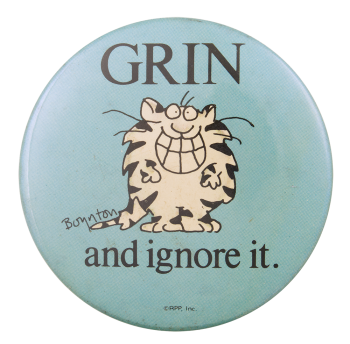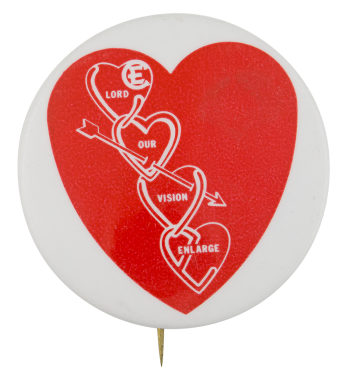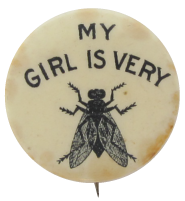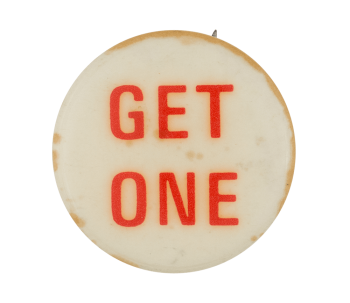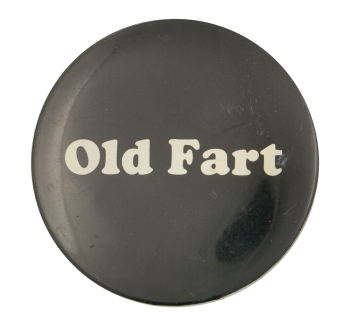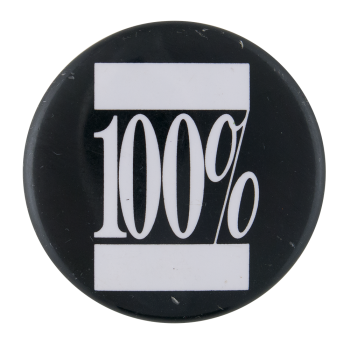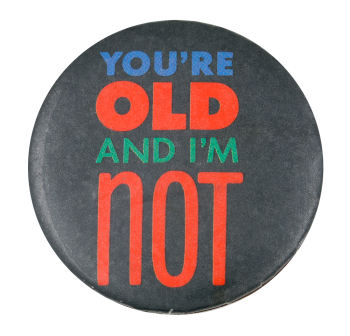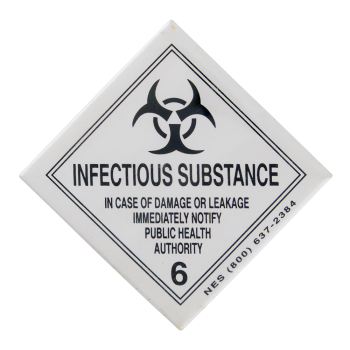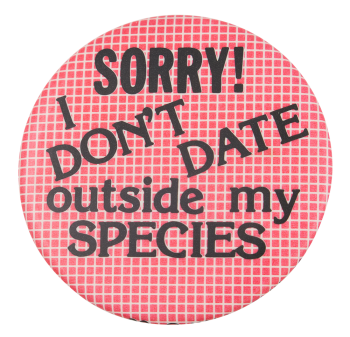Grin and Ignore It
| Category | |
|---|---|
| Additional Images | |
| Sub Categories | |
| Text on Button | GRIN and ignore it., Boynton, @RPP, Inc |
| Image Description | A grinning cartoon striped cat drawn in black and white has the word “GRIN” in uppercase letters above its head. Located at the bottom are the words “and ignore it” written in lowercase. The illustrator’s last name is written next to the cat. The text is black, and the background is light blue. |
| Back Style | |
| The Shape | |
| The Size | |
| Year / Decade Made | |
| The Manufacturer | |
| Additional Information | This is Sandra Boynton's humorous take on the phase “grin & bear it”. Ms. Boynton is an award winning American author, illustrator and humorist. She began her career designing greeting cards for Recycled Paper Greetings in the 1970’s. In the mid 1980’s, she sold over 80 million cards a year. She has authored and illustrated over fifty books for children and adults. Recently, Ms. Boynton has added songwriting and music producing to her repertoire. |
| Catalog ID | HU0044 |

